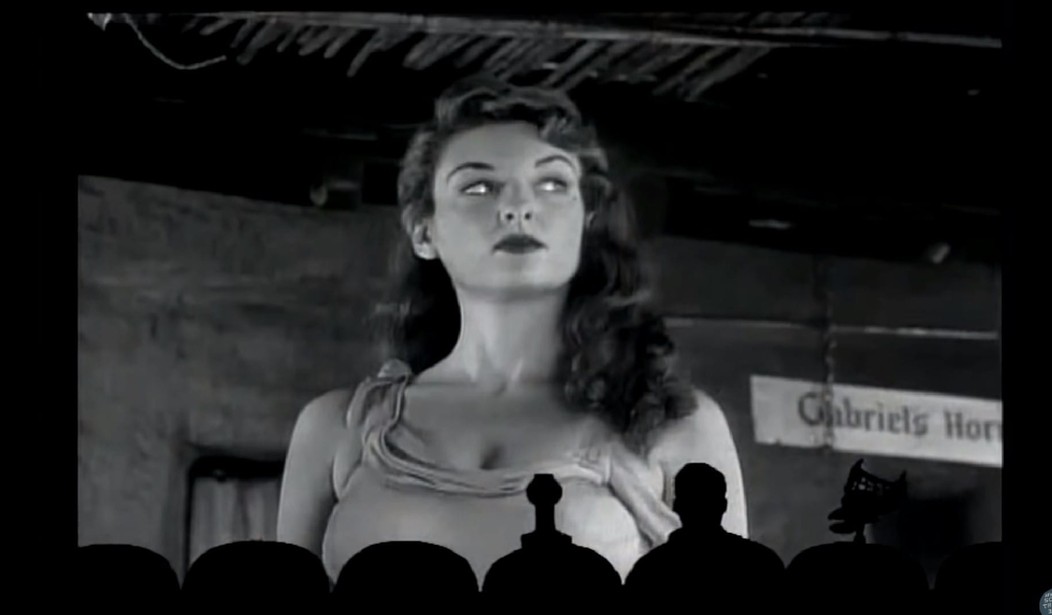In a review for director and producer Roger Corman’s 1967 b-movie, “The Undead,” the Film Fanatic.org blog makes it no secret to potential viewers that it’s no masterpiece. But as b-movies go, it keeps you engaged and entertained. With a storyline including witches in the Middle Ages and past life regression and god knows what else, what more can anyone ask for?
Roger Ebert interviewed Corman in 1967 for his film column in the Chicago Sun-Times. And he noted in the subheadline, Corman was just 40 years old at the time of the interview.The word “prolific” doesn’t do justice to how very busy the filmmaker was.
In his article, the late film critic shared an extraordinary bit of Corman trivia on that point.
As Ebert wrote:
Since 1956, Roger Corman has made more movies than anybody else. In 1959 alone, he made “Not of this Earth” and ”It Conquered the World” and “Attack of the Crab Monsters” and “The Day the World Ended” and “The Undead” and “Rock all Night” and “Shark Reef” and “Naked Paradise” and, “The Gunslinger” and a couple more.
And he once convincing Boris Karloff to film another movie for him, “The Terror,” over two days, before he paid the legendary actor for his services in the first film.
Mañana directo en el canal de Youtube. Temas : Leyendo un poco mas de ensayos de Poe Y platicando sobre "El terror", film "maldito" de Roger Corman, una pelicula muy a lo Poe, pero sin tener relacion directa con sus obras. pic.twitter.com/xa91UcBXDZ
— Miguel Fiz (@FizMiguel) January 4, 2021
One thing I want to caution you about: don’t be put off by the black and white images you see depicting his work. Though making movies in color was standard by that time, Corman explained to Ebert why many of his film were made in black and white:
“For years and years all films were in black and white,” he said “and the bulk of serious art film, and documentaries are in black and white to this day. When Technicolor first came in it was pretty garish, and people began to identify it in their minds with musical comedies.
“But color, properly handled, can make a film seem more realistic, not less. It’s very difficult, but it can be done. Look what Antonioni did in ‘Blow-Up.'”
Some readers might not realize this, but Corman gave many big names in Hollywood their start, by acting as their mentor early on. It was just one part of the weird world he created.
Working on or in his films helped spark the careers of many acclaimed movie directors and actors, including Francis Ford Coppola, Jack Nicholson, Martin Scorsese, Peter Bogdanovich, James Cameron, and the late Jonathan Demme.
In fact, he produced Coppola’s first movie:
DEMENTIA 13 (1963)
1er film de Francis Ford Coppola produit par Roger Corman.
Petit bijou macabre où une jeune femme, après la mort de son mari, part pour négocier un héritage avec sa belle famille. Mais c’était sans compter sur un mystérieux tueur à la hache… pic.twitter.com/aUpGrejzjW— Jé📻👻 (@je_romain) January 3, 2021
Weird movies aren’t all Corman has done, though. For example, he produced punk legends the Ramones’ classic musical, “Rock And Roll High School.”
Film buffs and others are still studying his extraordinary body of work, including in a new masterclass series, with Bogdanovich, John Sayles, and Joe Dante, three of Corman’s directing “students,” acting as special guest speakers.
Our Roger Corman Master Class begins this week with host Dan Halsted and special guest Alex Stapleton. Each week will feature deep dives into Corman’s work, themes and mentorship, with special guests including Peter Bogdanovich, John Sayles, and Joe Dante. https://t.co/qeEMnVKvyc pic.twitter.com/6HDHWyhXBi
— Movie Madness (@MovieMadnessPDX) January 4, 2021
Dante’s credits include the first two Gremlins movies, along with The Howling, Explorers, Innerspace, The ‘Burbs, and more.
Sayles, meanwhile, makes quieter, independent films, with his Passion Fish and Lone Star garnering accolades, including nominations for the Academy Award for Best Original Screenplay in 1992 and 1996, respectively.
And Bogdanovich has been responsible for some of the best filmmaking of the past 50 years, including 1971’s The Last Picture Show, a film which earned eight Oscar nominations and took home the Academy Award for Best Director; What’s Up, Doc? (1972); and Paper Moon the following year.
Corman hasn’t stopped trying to inspire new filmmakers, and during the coronavirus pandemic is no exception. Take a look at this tongue in cheek announcement he put out last May to his Twitter followers about the First “and hopefully last” Corman Quarantine Film Festival:
Starting Wednesday, I will announce the first of five runner-up films and post the corresponding short. Each day I will post one film leading to the presentation of the Grand Prize Winner on Monday. Keep watching and keep staying safe! pic.twitter.com/lhN3RZfYzb
— Roger Corman (@RogerCorman) May 25, 2020
With all this creative inspiration, who else but Corman could have laid the seed (pardon the pun) for “Little Shop of Horrors” in the ’80s:
the little shop of horrors (1960) – directed by roger corman pic.twitter.com/EQi8rP41HR
— ʚ angel ɞ (@romerosflesh) January 3, 2021
We need this absurdity in our lives right now, you know. Let’s dig in!
Maybe the best way to enjoy a first Roger Corman movie is on “Mystery Science Theater 3000.” Here’s their showing of “The Undead” below, via the official MST3K YouTube channel:
Let me know what you think in the comments area below! And thanks again for reading.














